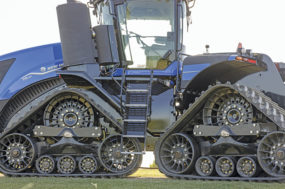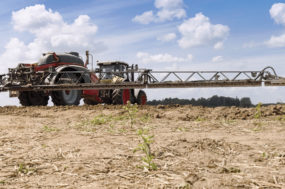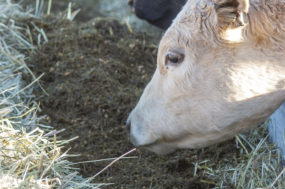Tall fescue-clover pastures have a long history of improving livestock performance in the U.S. transition zone as well as mitigating the effects of fescue toxicosis. In addition, clovers in tall fescue pastures improve the food supply for flower-visiting pollinators and increase nitrogen (N) cycling. This article discusses the practice of frost seeding clovers into tall fescue pastures and presents the results of experiments conducted in the Piedmont of North Carolina.
What is frost seeding?
Frost seeding is the practice of broadcasting clover seed in winter, so that the freeze/thaw cycles of the soil surface, coupled with late-season rainfall, favor seed penetration in the soil and provide adequate soil-seed contact, resulting in the successful establishment of clovers.
What are the purpose and benefits of frost seeding clovers into tall fescue pastures?
Clovers are frost-seeded into existing tall fescue pastures with the goal of creating tall fescue-clover mixtures. Tall fescue-clover mixtures provide multiple benefits compared to monoculture tall fescue pastures, including:
- Clovers improve the nutritive value (i.e., crude protein and energy) of the forage grazed by livestock and provide a food supply for flower-visiting pollinators (Figure 1).
- By fixing atmospheric N, clovers can reduce the need for N fertilizer to sustain the grazing system.
- Twenty percent to 40% clover in spring pastures and 10% in summer pastures improves livestock responses (e.g., weight gains of beef steers) and can alleviate chronic signs of tall fescue toxicosis.
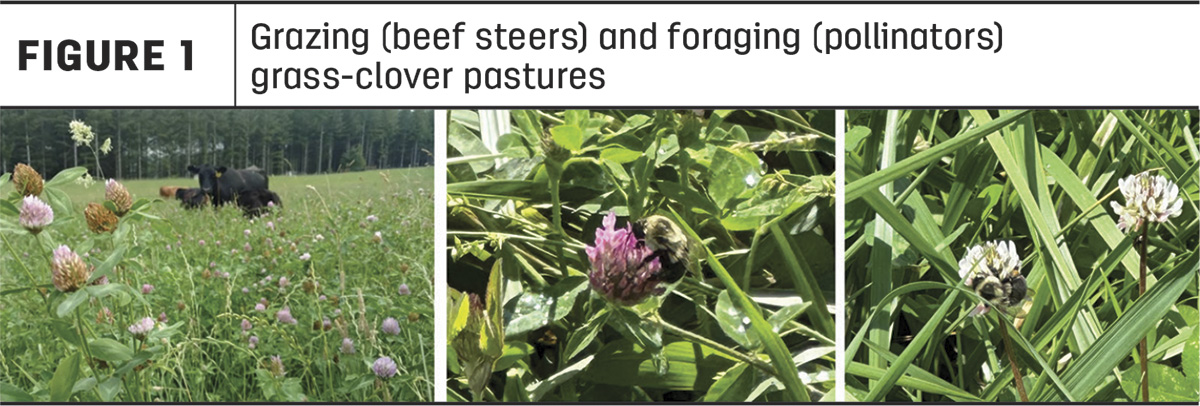
Steps to frost seed clovers into tall fescue pastures
Initial evaluation of tall fescue pastures
Pastures to be frost-seeded should be evaluated at least one year (ideally) in advance. The evaluation should include soil testing and weed pressure. Doing so will allow enough time to apply lime to correct the soil pH if needed. Legumes and the N-fixation process are particularly sensitive to soil pH, requiring a soil pH between 6 to 6.5. Fertilizer recommendations should be soil-test based.
If there is pressure from winter weeds, identify the weed species and an appropriate herbicide program. Weed pressure can hinder clover establishment due to competition for resources (e.g., light, soil nutrients and moisture). Weeds such as buttercup, musk thistle and buckhorn plantain can be selectively controlled with fall or spring applications using postemergence herbicides with the active ingredient 2,4-D. Note that the herbicides should be used in the seasons prior to when clovers are frost seeded.
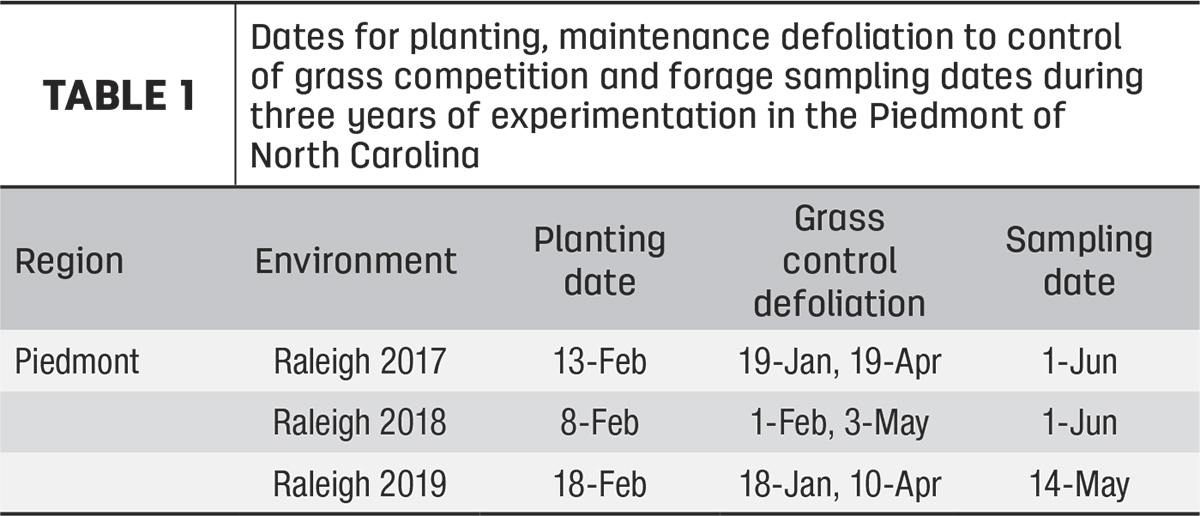
Frost-seeding dates
Variable weather patterns require that land managers continuously monitor soil moisture and weather at the specific field level to make the best possible decision to start field operations. Successful establishment of frost-seeded clovers in North Carolina was achieved when the seed was broadcast between early to mid-February in the Piedmont for three years of experimentation (2017-19) (Table 1). Detailed records for temperatures and rainfall for the January-to-June experimental period are presented in Figure 2.
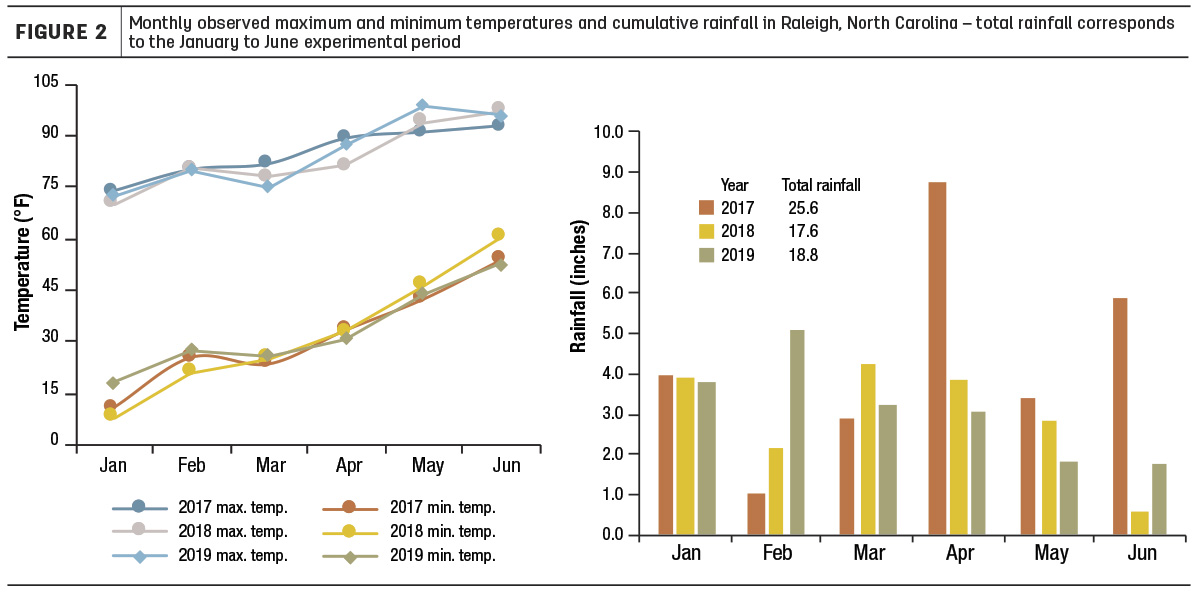
Control of competition from the grass component
The grass component should be clipped (and the clipped herbage removed out of the pasture) or grazed to a stubble height of 2 to 3 inches in preparation for frost seeding. Frost seeding can be achieved by broadcasting the seed (Figure 3). The process of broadcasting the clover seed can be accomplished by hand or by using spreaders.
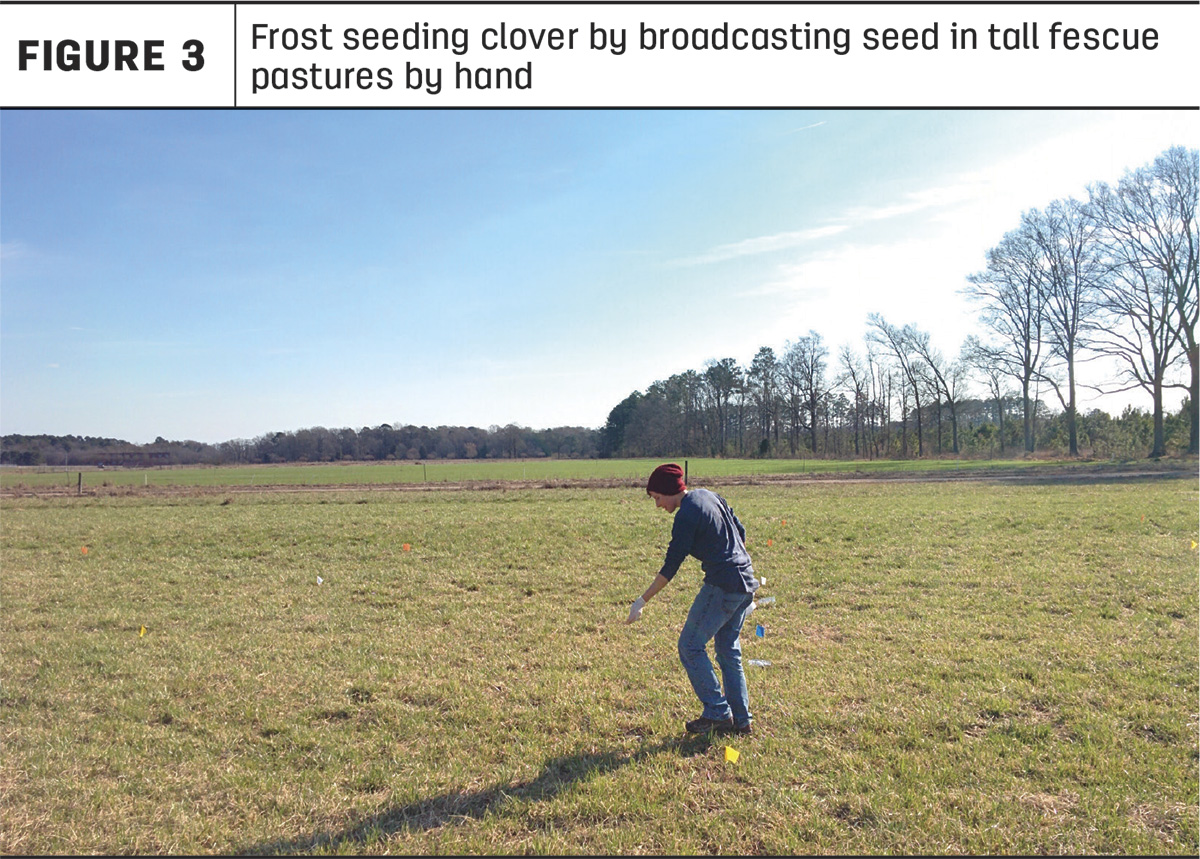
During the establishment phase, both the clover and grass components should be monitored, and the grass component should be frequently defoliated to the height of the emerging clovers (Figure 4). This approach allows to control competition from tall fescue and to favor continuous sunlight penetration to encourage the establishment of young clover seedlings. Between the planting date in February and harvest in late May/early June in the Piedmont, tall fescue was defoliated twice. See details in Table 1 as an example of the dates when activities took place in three different years in the Piedmont of North Carolina.
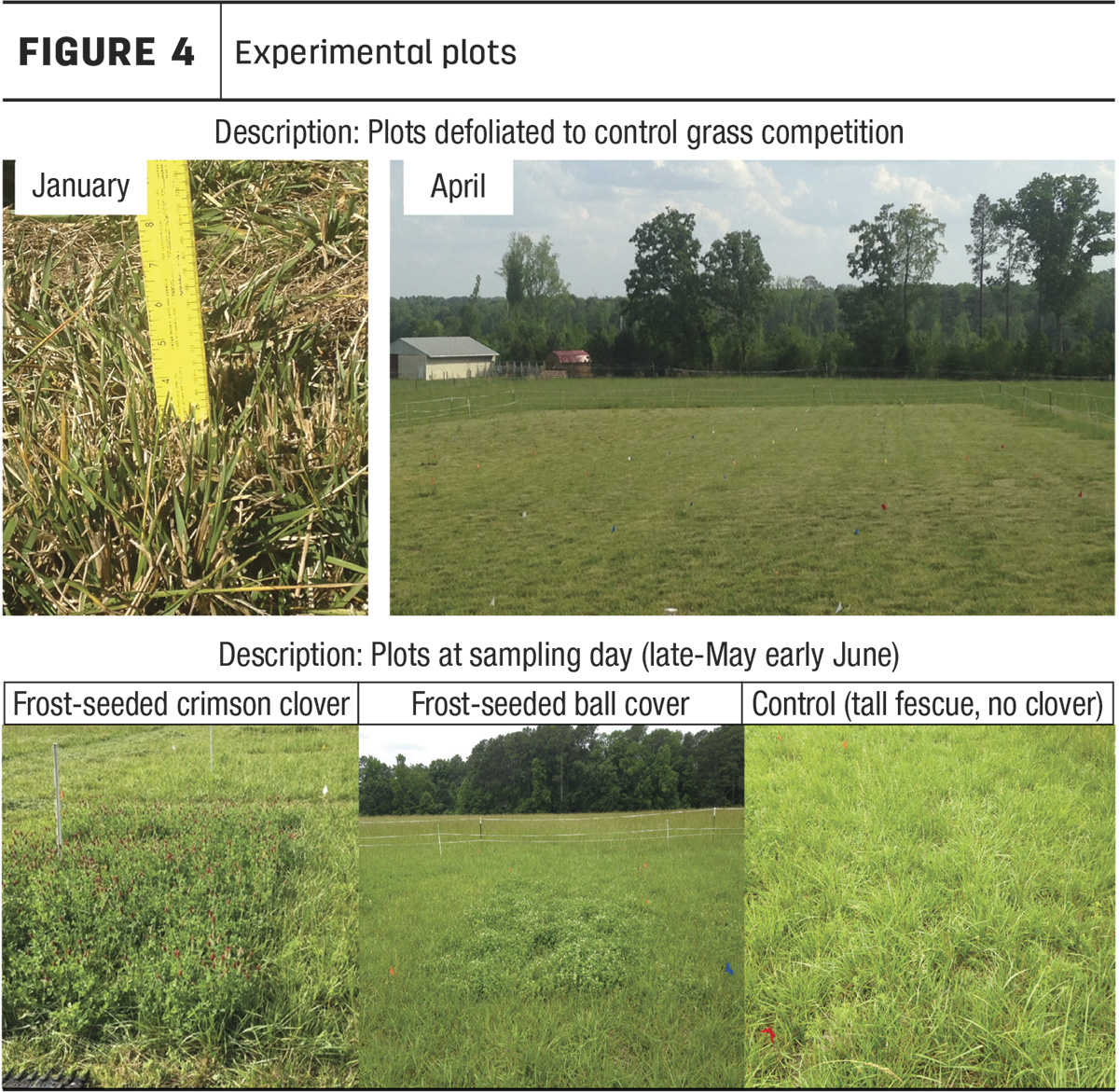
Planting rates
Recommended planting rates for frost seeding ball, crimson, red and white clovers in the Piedmont are 5, 18, 10 and 5 pounds per acre, respectively, on a pure live-seed basis rate. It is worth noting that available clover seed is nowadays most likely coated, and the coating can account for a considerable weight of the bulk seed. For this trial specifically, seed coating represented 30% to 50% of the bulk seed weight.
Take-home messages
Frost-seeded clovers into tall fescue pastures accounted for 27%, 35%, 23% and 11 % for ball, crimson, red and white clovers, respectively, of the total herbage mass in the late May/early June sampling event (Table 2). Weed infestation (i.e., “other” in Table 2) was noticeably lower in frost-seeded plots compared to the tall fescue plots with no clovers. Greater total herbage mass was not necessarily observed because of frost seeding clovers into tall fescue pastures.

There was a positive effect of frost seeding clovers on crude protein (CP) and total digestible nutrient (TDN) concentrations in the harvested forage (Table 2). However, the improvement in nutritive value was marginal in this case. It is worth noting that, compared to the values required to meet the dietary needs of a lactating beef cow in the first 90 days after calving if forage was the only source of feed (i.e., 10.5% CP and 60% TDN), the CP and TDN concentrations of the grass component alone met these requirements (Table 3).

Data from 12 independent tall fescue grazing trials in the U.S. tall fescue belt was previously summarized by Thompson et al. When the clover component represented at least 20% to 40% of the herbage mass in spring and 10% in summer pastures, daily weight gains of beef steers were at least 10% greater on high endophyte (50% to 97% infestation) tall fescue-clover mixtures and about 20% greater on low endophyte (less than or equal to 5% infestation) tall fescue-clover mixtures, compared to monoculture tall fescue pastures.
Ball, crimson, red and white clovers can be successfully frost seeded into tall fescue pastures as a strategy to create a grass-legume mixture and to improve pasture and livestock responses, as well as to support pollinators and to increase N cycling.
References omitted but are available upon request by sending an email to the editor.




